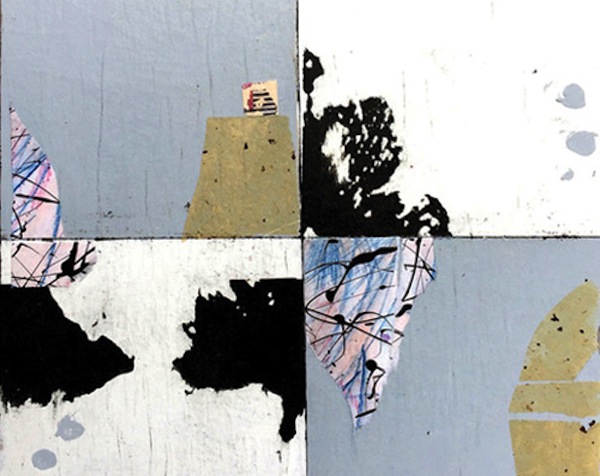“Resistance” by Dorothy Doherty. Part of the Beyond the Surface exhibition now on at the Zack Gallery until Sept. 8. (photo from gallery)
The Jewish Community Centre of Greater Vancouver has opened its doors again, at least partially, and the Sidney and Gertrude Zack Gallery is presenting a new exhibition, Beyond the Surface. Art lovers can make appointments to tour the show in person. It features five local artists – Janice Beaudoin, Olga Campbell, Dorothy Doherty, Jane McDougall and Ellen Pelto – and the Jewish Independent interviewed them recently by email about their art, and how the pandemic has affected them.
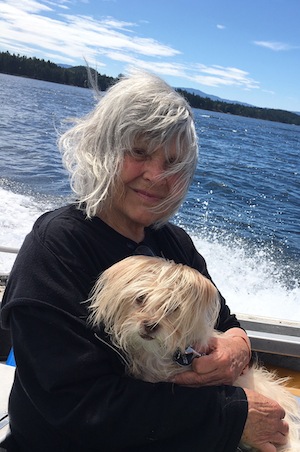
“This exhibit was originally scheduled for June 4,” said Campbell. “Because of COVID, it was a bit late. It was hung on June 18, and the virtual opening through Zoom was on July 8.”
Last year, the five artists attended a five-day workshop in Victoria led by California artist Michael Shemchuk, though some of them had met before then.
“Dorothy and I have been friends for 45 years,” said Pelto. “I met her in a clay class she was instructing. I’ve also known Olga for eight years.”
“I met Olga Campbell in various art workshops in Vancouver and then spent five years on campus with her at Capilano College between 2008 and 2014,” said Doherty. “We took some classes together and worked independently in others, all the while growing in friendship.”
Doherty, who has taken Shemchuk’s workshops several times over the years, met McDougall and Beaudoin at one or another of those sessions. And Shemchuk’s teaching, especially on the paper layering technique, has been instrumental in the birth of this Zack show.
“A couple of us thought that it would be interesting to show some of the work that we had created in his workshop,” Campbell recalled. “We thought that five [artists] would be a good number to demonstrate the cohesiveness of the art, as a result of us all using the same techniques, but also showcase each of our individual styles.”
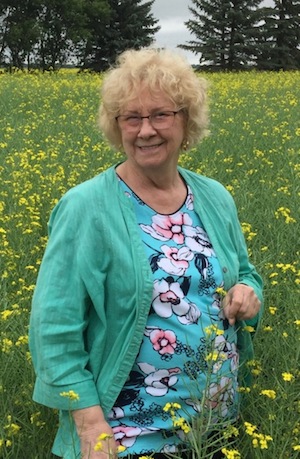
Doherty came up with the title, Beyond the Surface. She said the rest of the group quickly agreed. “I think the word surface resonated with us because we all do unique surface treatments,” she said. “Surface is really important in art and in life, but we always want people to look beyond appearances – learn about people and artwork in greater depth.”
To produce the works, the artists manipulated a surface in many ways. They layered, sanded, abraded and painted it; even cut into it to reveal what lay beneath.
Beaudoin elaborated: “Beyond the Surface is the ideal name for this show, as the technique we all used is based on the process of layering paper and paint. As we add and subtract paint and materials by sanding or scraping, each artist makes decisions about what elements to reveal and what to hide. The final surface is one that often appears aged and somewhat mysterious, providing the viewer with enticing glimpses of things that are hidden beneath the surface and leaving them to wonder what has been covered.”
In a way, this show’s unusual story echoes its title as well. While a traditional vernissage is an event where art connoisseurs mingle inside a gallery, the pandemic forced Zack Gallery director Hope Forstenzer to show and promote the art digitally.
“She did a virtual tour of our show at the JCC,” said Campbell, “and she is also interviewing each of us in our studios live via Zoom, so that people can see our art and have a virtual tour of our studios.”
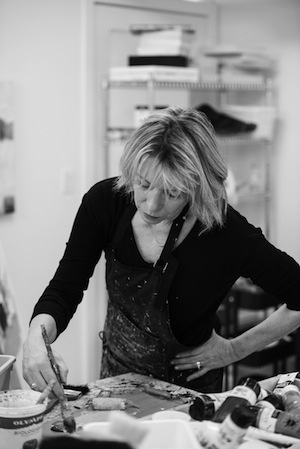
The artists mused about the changes in their field and in gallery procedures wrought by COVID-19.
“My sense is that pandemic or no pandemic, artists will always make art. The biggest challenge is going to be getting the art out to the world to enjoy,” said Beaudoin. “There is always a basic human desire to stand before a work of art in person. That is definitely the best way to engage with a painting. However, there is a generation of media savvy younger art buyers who are used to purchasing things by seeing them on a computer screen. I think that galleries that are working to provide virtual viewing options are the ones that will survive. The art world, like all industries, really has no choice but to adapt.
“I also feel that it must be acknowledged that many people still find comfort in seeing art in person. The art world is known for its fun social events – and we know now that the comfort of human contact cannot be fully recreated online. My sense is the future of art shows and museums will be a carefully managed balance of socially distanced in-person viewing and virtual showings.”
“I have been fortunate,” said Campbell. “I continue to meet regularly with three other artists. We create our art at home and then share it with each other on Zoom. With another artist friend, I have been playing Photoshop tennis online. One person sends the other an image, the other person adds another image through Photoshop, and this continues until the piece is finished.… I think that we are in this for the long haul; two years, maybe more. I think that, in the future, art shows will continue in real life – in fact, it is already happening – but I do think that some of the virtual things will remain.”
“It’s hard to say how the pandemic will change exhibition practices in the future,” said Doherty. “I do appreciate all the online exhibits, as there would be no other way to see many of these exhibitions. But I really believe there is no substitute for the gallery system as we know it, with wonderful opening nights and the ability to see the artwork in person. We need that direct exchange of human energy, and the feedback we get from visitors and friends. We need access to art in galleries and to artifacts in museums – it’s how we learn. I have always said, despite my gratitude for online Zoom meetings, that the human experience is not the same. It’s flat instead of three-dimensional. We are looking at screens. We are not looking at the real person. There is no exchange of human energy online. We need direct human contact. That’s what we need to live happy, successful lives.”
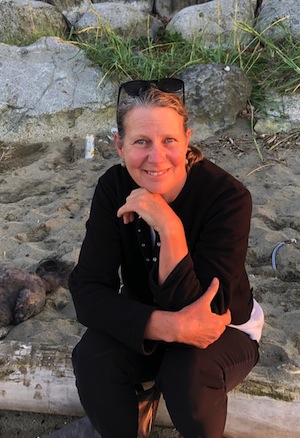
For McDougall, the pandemic hasn’t changed much for her. “I think most visual artists are used to working in isolation. My art practice has remained the same,” she said. “Listening to CBC in my studio keeps me up to date on the world and, of course, most of the talk is about COVID. I feel grateful to live in B.C.
“I am generally a positive person and my thoughts reflect that. I think there will be more of an online presence for art,” McDougall continued. “And, like Hope Forstenzer’s example throughout this show, there will be interactive web calls and taped studio visits. Because of that, artists will become more involved in the galleries. Long term, I think the pandemic will pass. Art galleries and museums will always be an important element in education and sharing the past. Nothing will replace the up close and personal view of art.”
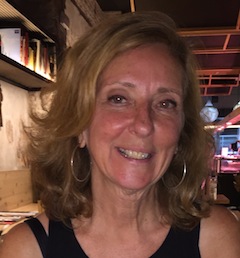
Pelto agreed. COVID has changed exhibition practices, she said, and “will inevitably change the future practice of making, exhibiting, buying and selling art. However, people will always need to see art. That will not change. People need to see it to appreciate the scale, proportions, richness of colours and textures, and to feel their evocative response. Some of the positive outcomes include the creation of more and stronger online artistic communities. The online presence increases exposure for artists, and interesting themes will emerge in art that will define the human condition of COVID.”
Beyond the Surface runs until Sept. 8.
Olga Livshin is a Vancouver freelance writer. She can be reached at [email protected].

